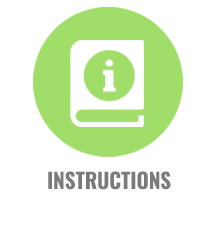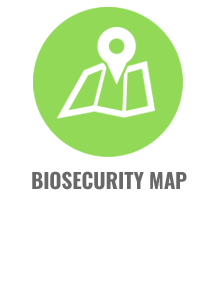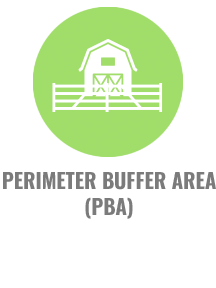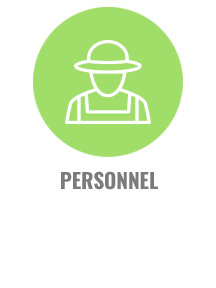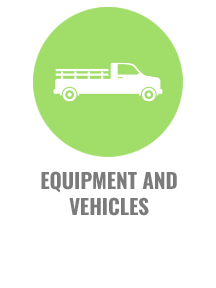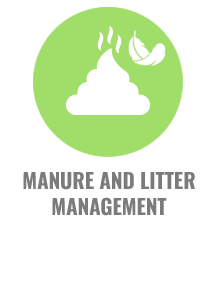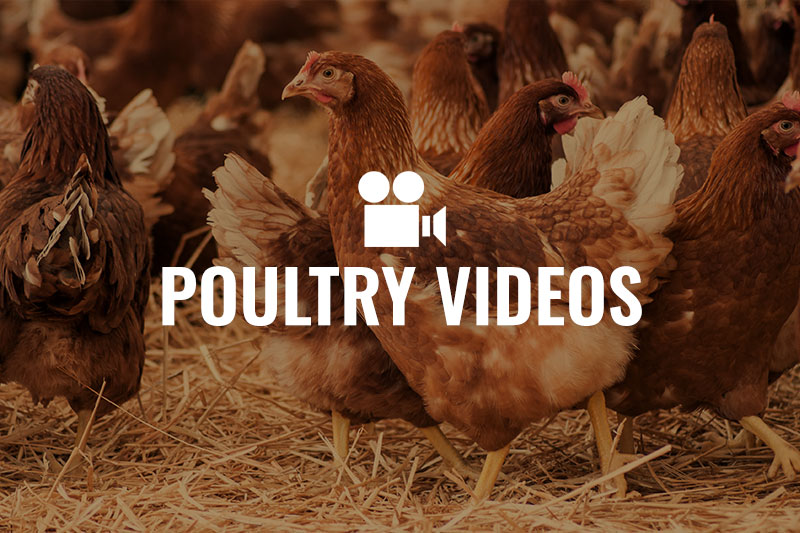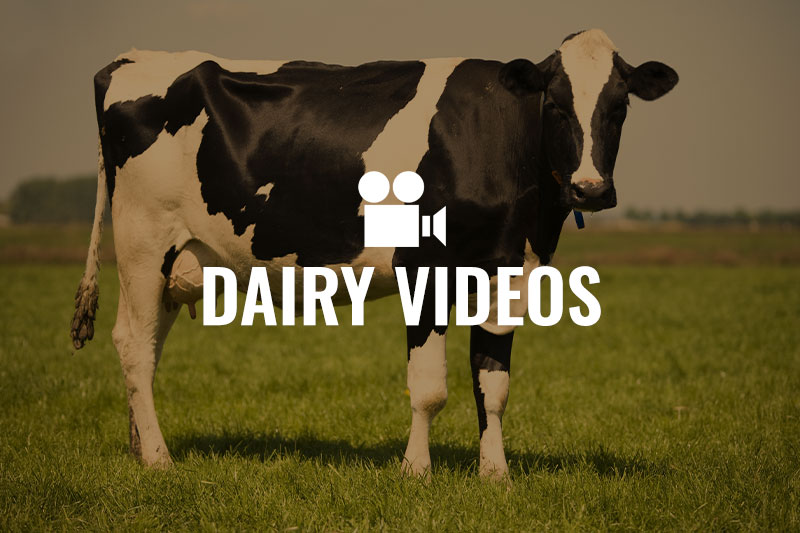Wild Birds, Rodents and Insects
Introduction
Your farm’s enhanced biosecurity plan will include a “Wild Birds, Rodents, and Insects” section that describes how management controls these pests, which are known to transfer animal and poultry disease during outbreaks.
When writing the Wild Birds, Rodents, and Insects section of your plan you may find it useful to read examples extracted from other plans. Because good pest control practices may not change dramatically during a disease outbreak, the farm’s Enhanced Biosecurity Plan may refer to its “Daily” or “routine” practices.
Click on the items below to view some potential language (written as blue text in boxes) to draw from as you develop your own daily or enhanced plan, specific for your own farm. Such example blue text is only a starting point and may not be appropriate for your farm or meet your state’s requirements.
This section will guide you through:
- Description #1
- Description #2
- Description #3
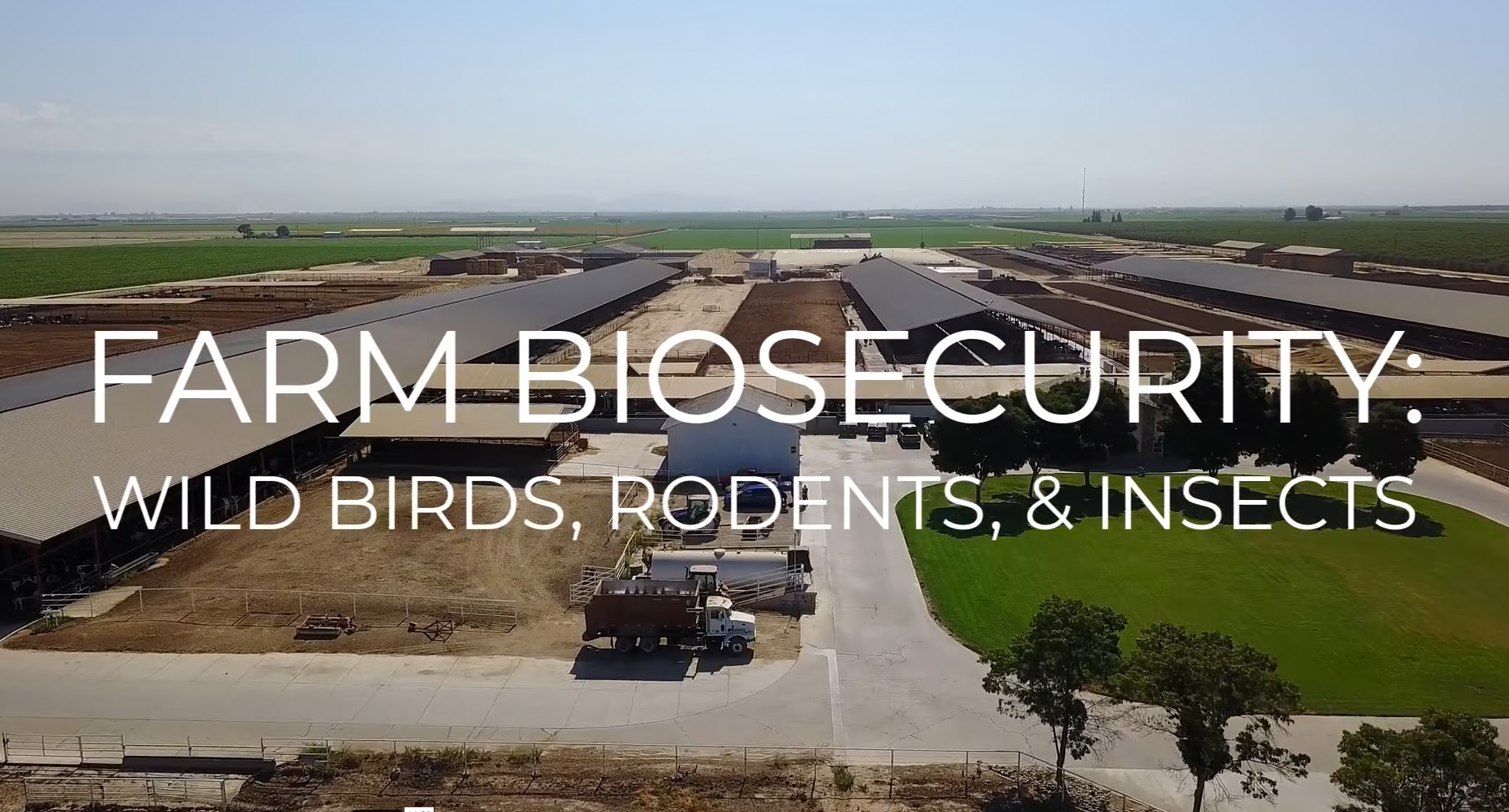
Wild Birds, Rodents, and Insects
Pest Control is a key component of any premises’ biosecurity plan. Pests are a known reservoir and vector of pathogenic and zoonotic diseases. Because pests are endemic to all environments, management must maintain a robust monitoring and exclusion program to keep pest populations suppressed.
Daily Biosecurity Requirements:
- Poultry operations should have control measures to prevent contact with and protect poultry from wild birds, their feces, and their feathers as appropriate to the production system.
- Control programs and monitoring to prevent rodents, insects, and other animals from entering the poultry house should be in place and documented.
- These procedures should be reviewed further during periods of heightened risk of disease transmission.
Describe the CONTROL MEASURES to prevent contact with, and protect poultry from, wild birds, their feces, and their feathers as appropriate to the production system during normal, daily operations:
Wild Bird Exclusion: Complete exclusion of wildlife in open-sided houses is not possible, but the following best practices have been implemented:
- An employee is appointed to survey the premises for spilled feed several times a day. When spilled feed is present it is cleaned up promptly.
- Wild bird nests are removed weekly, especially during nesting season. We have installed Owl and Hawk boxes outside the PBA perimeter to encourage natural predation.
- The company has drained and filled any depressions that during the winter rains could fill with water and offer in inviting habitat for migrating water fowl.
- Prior to the rainy season the company also dredges rainwater run-off ditches to ensure they don’t become clogged and fill upstream. This not only helps prevent development of a habitat for migrating water fowl, but also serves as flood control which helps minimize insect habitat from developing.
- Pet Policy: No owned birds or mammals, other than commercial production chickens owned by the company, are permitted in the buildings at any time. Dogs, cats, and other pets are not allowed to enter the premises.
- More waterfowl preventative measures are described in the “Water” section.
- Additional preventative measures for preventing employees from bringing wild bird manure, dander, or feather onto the premises is described in the “High Risk Employee Movements” section. The most important mitigation in this is employees agreeing in writing not to own personnel “backyard” poultry.
Describe how the premises prevents poultry (including stray poultry) and other animals found outside the cages/house from entering the LOS (poultry Houses/Pens) during normal, daily operations:
Any stray live poultry (or sick or injured wild birds or rodents) are humanly euthanized and immediately are placed in the dead bird receptacle for rendering. Stray poultry are never returned to their cages or other areas in the houses. Any carcasses of dead poultry (or wild birds or rodents) are placed in the dead bird receptacle for rendering.
Describe CONTROL MEASURES for wild birds during normal, daily operations:
See bullet points above. California law prevents the poisoning or harassment of wild water fowl. Other wild avian species are controlled using the methods described in the bullet points above.
Provide the PROCEDURES (SOP) for the monitoring of rodents during normal, daily operations:
Since 2010 our facility has engaged ABC Pest Control Solutions LLC, a private Pest Control Operator (PCO), to provide regular pest control services. Inspection, service and documentation services are performed on a weekly basis. This contractor’s technician maintains documentation of their service activity on our facility. The documentation describes results of their weekly inspections including results of their pest observations and pest density estimates. Inspection and maintenance services include removal of wild nests, inspecting and refilling rodent bait traps, evaluation of insect spot cards and spaying for insects. This protocol is in accordance with state and local regulations for controlling rodents. Monitoring for presence of rodents and estimation of their number is performed primarily by observing and recording the condition of the bait traps and the amount of bait remaining in the traps. In addition, carcasses of dead rodents and pest damage done to the facility are recorded.
ABC Pest Control Solutions LLC
8378 Main Street
City of Industry, CA 91748
(800) 123-4567
Each week the contractor technician records the following information:
- Name of employee performing the inspection
- Date, time, and location of the inspection
- The areas and type of equipment inspected
- Type and approximate number (density) of pests
- Date, time, and location when new equipment is placed or stations refilled.
- Corrective actions to be taken as needed
Does the premises use any of the following for the monitoring of rodents during normal, daily operations?
![]() Mechanical Traps
Mechanical Traps
![]() Bait Traps
Bait Traps
![]() Other
Other
![]() No
No
![]() Not applicable
Not applicable
If “No” or “N/A” is selected, explain how the premises monitors rodents during normal, daily operations:
Not applicable.
Provide the PROCEDURES (SOP) for the control of rodents during normal, daily operations:
A private Pest Control Operator (see above) is used to provide regular pest control services. Inspection and maintenance services (including removal of wild nests, inspecting and refilling bait traps and spaying for insects) is performed on a weekly basis. See above for more information. This contractor maintains documentation of their service activity on our facility. The documentation is collected and stored in the front office. The documentation describes the results of the technician’s facility inspections, observations of evidence of pest presence, pest density estimates, corrective actions taken and recommendations for facility maintenance. This protocol is in accordance with state and local regulations for controlling rodents. Copies of the weekly records resulting from the technician’s inspections, including recommendations for facility maintenance, results of pest monitoring and the services applied are stored in the front office.
Describe how monitoring and control measures for rodents are documented during normal, daily operations:
See above.
Provide the premises procedures (SOP) for Actions to be taken when the monitoring of rodents is elevated:
Our contracted pest control service monitors rodent activity and density when performing a weekly inspection of the facility. The pest control technician determines if additional actions need to be taken. This could include, but is not limited, to recommendations for:
- maintenance or repair to house infrastructure to prevent avenues of rodent entry
- removal/cleaning of attractant areas like spilled feed or carcasses in composting piles
- implementing additional vegetative/weed removal
- use of additional bait stations or bait station locations
- increased frequency of bait station refilling
- implementing mechanical trap monitoring
- changing rodenticide being used if there is evidence of rodenticide resistance
Copies of records resulting from the technician inspections (including recommendations for facility maintenance, results of pest monitoring and the services applied) are stored in the front office for review by management.
Provide the PROCEDURES (SOPs) for the monitoring of flies during normal, daily operations:
A private Pest Control Operator (see above) is used to provide regular pest control services including fly control. Inspection and maintenance services is performed on a weekly basis. Our contracted pest control service monitors fly density primarily using fly speck cards. These cards are collected, replaced and evaluated on a weekly basis.
Does the premise use any of the following for the monitoring of flies during normal, daily operations?
![]() Traps
Traps
![]() Traps Sticky Boards & Traps
Traps Sticky Boards & Traps
![]() Fly Cards
Fly Cards
![]() Scudder Grills
Scudder Grills
![]() Other
Other
![]() No
No
![]() Not applicable
Not applicable
If “No” or “N/A” is selected, explain how the premises monitors for flies during normal, daily operations:
Not applicable.
Provide the PROCEDURES (SOPs) for the control of flies during normal, daily operations:
Our contracted pest control service monitors fly density using fly speck cards. These cards are collected, replaced and evaluated on a weekly basis. The pest control technician then determines how fly spray will be used, including the type of chemical, the frequency, the concentration and the locations on the premises to be sprayed. The technician may also make recommendations related to facility maintenance, such as removing fly habitat. This could include removing wet areas around feed or composting piles or mowing or herbicide of spaying overgrown vegetation close to the houses. Copies of records resulting from the technician’s inspections, including results of pest monitoring, recommendations for facility maintenance, and the services applied are stored in the front office.
Provide the premises procedures (SOP) for Actions to be taken when the monitoring of flies is elevated:
Our contracted pest control service monitors insect activity and density when performing a weekly inspection of the facility. The pest control technician determines if additional actions need to be taken. This could include, but is not limited to, recommendations for:
- maintenance or repair to house infrastructure such as leaky pipes or hose bibs
- removal/cleaning of attractant areas like spilled feed or carcasses in composting piles
- additional vegetative/weed removal
- use of additional fly cards or fly card locations
- increased frequency or area of spraying
- changing the insecticide being used if there is evidence of insecticide resistance
Describe how monitoring and control measures for flies are documented during normal, daily operations:
Copies of records resulting from the technician inspections (including recommendations for facility maintenance, results of pest monitoring and the services applied) are stored in the front office for review by management.
Describe CONTROL MEASURES for insects (other than flies) during normal, daily operations:
The service provided by our contracted pest control company has been adequate to prevent issues with both flies and non-fly insects. In the event we experienced a non-fly insect problem (fire ants, termites, etc.) we would consult with our pest control company management. In the event that we were not able to resolve non-fly insect problems we would consult with the University of California’s Cooperative Extension (UCCE) entomologist.
Describe CONTROL MEASURES for cats and other animals during normal, daily operations:
Pet Policy: No owned birds or mammals, other than commercial production chickens owned by the company, are permitted in the buildings at any time. Dogs, cats, and other pets are not allowed to enter the premises. We contact County Sherriff for removal of stray, roaming dogs, cats or other pets by Sherriff Animal Control officers. This not only provides increased biosecurity but removes danger of stray pets to our commercial birds. In the event that a cat cannot be captured by Animal Control we will set human, non-kill mechanical traps in the frequented areas.
Describe how CONTROL MEASURES for insects (other than flies), wild birds, cats, and other animals are documented during normal, daily operations:
Our contracted pest control service monitors for evidence of activity of insects (other than flies), wild birds, cats, and other animals when performing a weekly inspection of the facility. The pest control technician determines if additional actions (beyond those described above) need to be taken. The observations and recommendations resulting from the technician inspections are collected and stored in the front office for review by management. This includes including results of pest monitoring, the services applied by the technician and recommendations for facility maintenance.
Provide the premises procedures (SOP) for the pest CONTROL PROCEDURE around mortality storage and disposal areas during normal, daily operations:
The same procedures described above are applied to our mortality storage and disposal areas. Our contracted pest control service monitors for evidence of activity of pest activity, particularly fly and rodent activity, in those areas. The observations and recommendations for maintenance and mitigation resulting from the technician’s inspections are collected and stored in the front office for review by management.
Provide the procedure (SOP) for controlling and removal of debris INSIDE the poultry house that could serve as harborage for pests during normal, daily operations:
Employees are trained and encouraged to report to their supervisor collection of debris both inside and outside the poultry houses. Removal of debris inside the poultry houses is only performed by farm employees wearing farm specific PPE.
Provide the procedure (SOP) for controlling and removal of debris OUTSIDE of the poultry house (PBA) that could serve as harborage for pests during normal, daily operations:
Employees are trained and encouraged to report to their supervisor collection of debris both inside and outside the poultry houses. Additional observations of debris outside the houses may be provided by our contracted pest control technician during his weekly inspections.
Enhanced Biosecurity
The term pest (in the SFS Program) includes insects, rodents, wild birds, stray poultry, dogs, cats, and other animals not associated with premises business activities
Pest Control Requirements:
- All federal and state regulations must be met and implemented unless otherwise directed by the IMT.
- All control measures for pests including mechanical traps, bait stations, and approved chemicals must be documented in a pest control plan.
- The premises management must document all procedures for the monitoring of control measures using equipment such as traps, fly strips, spot cards, glue traps or other appropriate mechanical traps.
- Monitoring activities must be documented in the premises’ pest control log.
- Designated premises personnel will record the following information:
- Name of employee performing the inspection
- Date, time, and location of the inspection
- Type of equipment inspected
- Type and approximate number of pests
- Date, time, and location when new equipment is placed
- Corrective actions to be taken as needed
- All debris and harborage from the inside and the surrounding area outside of the animal housing areas that could harbor pests must be cleared.
- Feed area/bins must be secured, and spilled feed must be immediately cleaned and discarded.
- Water sources and feed intended for animal use are placed and secured to prevent pest access.
Note: Daily biosecurity pest control as queried in daily section must still be used during Enhanced Biosecurity Plan activation.
Describe any enhancements/changes to premises daily biosecurity practices regarding pest control during Enhanced Biosecurity Plan activation:
Daily biosecurity pest control (as described above in Daily Biosecurity Requirements section) will still be used during an Enhanced Biosecurity Plan activation. This includes:
- The premises management will continue to provide pest monitoring and control measures including use of bait stations, spot cards, insecticide spays and maintenance recommendations.
- During current, routine weekly inspections, our contracted pest control technician dons farm-specific PPE and utilizes tools (sprayers, bait stations, spot cards etc.) that are farm-specific. These tools are not used on other farms.
- Weekly inspection and control activities performed by our pest control company technician will be documented in the premises’ pest control log, which can be found in the front office.
- Weekly identification and removal of debris and harborage from the inside houses and the surrounding area outside of the animal housing areas will be performed and documented.
- Feed storage bins and silos are secured from general intrusion by rodents and wild birds. Areas involved with feed are examined several times a day for spills. Spilled feed is immediately cleaned and discarded.
- Water supplied to birds and cleaning is well water and cannot be contaminated with pathogens from rodents and wild birds.
In the event that our farm’s Enhanced Biosecurity Plan is activated management will conduct a review of its pest control plan.
In particular the review will focus on how effective wild bird exclusion measures are at preventing contact of our commercial poultry from wild birds, their feces, and their feathers.
Based on the extensive measures described above in our daily control measures, our company does not anticipate changes to the farm’s pest control procedures during an activation of our Enhanced Biosecurity Plan.
In the event that wild bird activity and density threatens biosecurity, farm management will consider use of:
- A light plastic “capture” netting has been placed over the open sided houses to restrict entry of birds into the open sided houses. This is not necessary on the closed sided houses.
- “Air cannon” or “Air Dancer” (inflatable, flailing tube man figure) to harass wild birds. This might be placed in particular around our feed, mortality and manure processing areas.
Training Materials Goes Here!
Pest
This may include insects, rodents, wild birds, stray poultry, dogs, cats, and other animals not associated with the premises business activities. Biosecurity plans must include clear descriptions of how pests will be monitored and controlled on the farm premises on a day-to-day basis and during times when enhanced biosecurity is needed, like during an animal disease outbreak that impacts your farm premises.
Pest intrusion
Occurs when insects, rodents, wildlife, wild birds, other domestic animals or pets enter an area on the farm. This intrusion may result in transmission of diseases to the commercial animals housed on the farm. Loose poultry that have escaped from the poultry houses are also considered pests as they may become exposed to pathogens once outside of their housing making it unsafe to return them to the flock from which they came. On many commercial farms, loose poultry will be disposed of in accordance with farm biosecurity policies.
